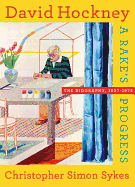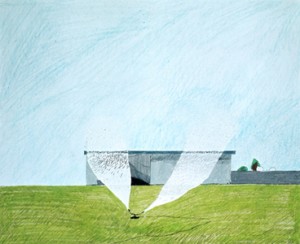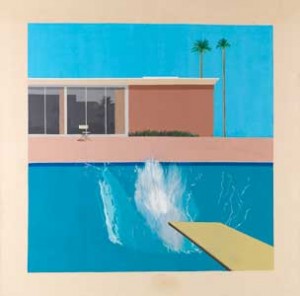David Hockney: A Rake's Progress
 I've been reading a lot lately especially artist biographies and I like to pick out my favorite bits esp. those spoken by the artist her/himself. In this case it's David Hockney. Enjoy! My Favorite Bits from David Hockney: The Biography, 1937-1975 by Christopher Simon Sykes
I've been reading a lot lately especially artist biographies and I like to pick out my favorite bits esp. those spoken by the artist her/himself. In this case it's David Hockney. Enjoy! My Favorite Bits from David Hockney: The Biography, 1937-1975 by Christopher Simon Sykes
Hockney confessed that he was so frustrated by what he was doing that it sometimes seemed pointless to go on. "He (Ron Kitaj) told me," Hockney remembers, "that I should look upon painting as a means of exploring all the things that most interested me, and that I should paint pictures that reflected this. This was the best advice he ever gave me." Kitaj probed his interests, discovering them to be poltics, literature, relationships, vegetarianism, and encouraged him to consider using these as subject matter for paintings. "I thought it's quite right; that's what I'm complaining about, I'm not doing anything that's from me. So that was the way I broke it. I began to paint those subjects." (p. 69)
Lawn Sprinkler, 1966 colored crayon on paper, 14 x 17 in. © David Hockney
What distinguished this particular show (in 1961) was that Grabowski invited each of the participants to write a personal statement for the catalogue on the theme of "the strange possibilities of inspiration." Hockney wrote: "I paint what I like when I like, and where I like, with occasional nostalgic journeys. When asked to write on 'the strange possibilities of inspiration' it did occur to me that my own sources of inspiration were wide -- but acceptable. In fact, I am sure my own sources are classic, or even epic themes. Landscapes of foreign lands, beautiful people, love, propaganda, and major incidents (of my own life). These seem to me to be reasonably traditional." It was a philosophy he has adhered to all his working life. (p. 116)
"Los Angeles is the only place in the world," he says, "where the buildings actually make you smile when you drive around."...So, rather than his own ideas or things he'd seen in a book, Hockney began to paint the things he saw around him....Other characteristics of acrylic, such as its regular consistency, allowing it to be applied thinly while retaining its full brilliance of colour, go a long way to explaining the changes in Hockney's painting style during this period. His paintings became flatter and much more about image and colour than about texture. "When you use simple and bold colours," he later wrote, "acrylic is a fine medium; the colours are very intense and they stay intense..." (p. 145)
A Bigger Splash, 1967, acrylic on canvas, 96x96 in. © David Hockney
As for the Japanese boys (in Kyoto) "they are as exquisite as the Zen gardens. I have done a few drawings and taken eight hundred photographs...and really have been turned on so much that if I never left Powis Terrace for five years I've enough in my head to keep me going." (p. 264)Though money took away the stress of having to churn out work in order to survive, it had never been that important to him, other than as a means of paying for materials, giving him freedom to travel anywhere and allowing him to go to a restaurant without worrying about how he was going to pay the bill. He called himself "restaurant rich." "if you're an artist," he wrote, "the one thing you can do when you get money is use it to do what you want in art. That's the only good thing you can ever do for yourself. As an artist, what do you need to live on? As long as you've got a studio and a place to work in, all you're going to do is paint pictures all day long." (p. 273)
(Stephen) Spender compared Hockney and his contemporaries to the irreverent and antisocial tradition of art that emerged after the Industrial Revolution, as exemplified by the Pre-Raphaelites, such as Samuel Palmer and, particularly, William Blake, an artist who "remained outside the main tradition all his life, mocking at the religious and artistic institutions of his time, and producing his own totally original poetry and art." (p. 315)

